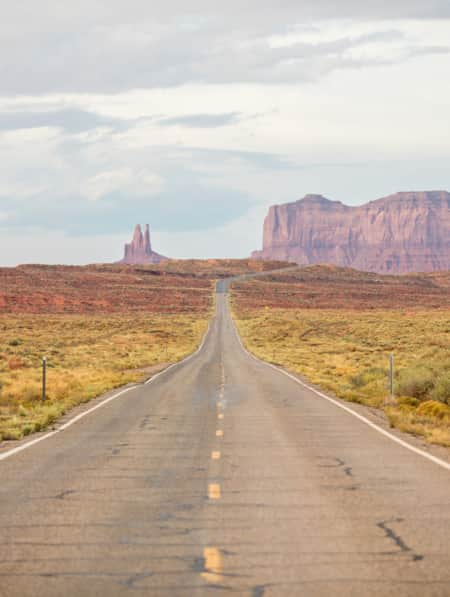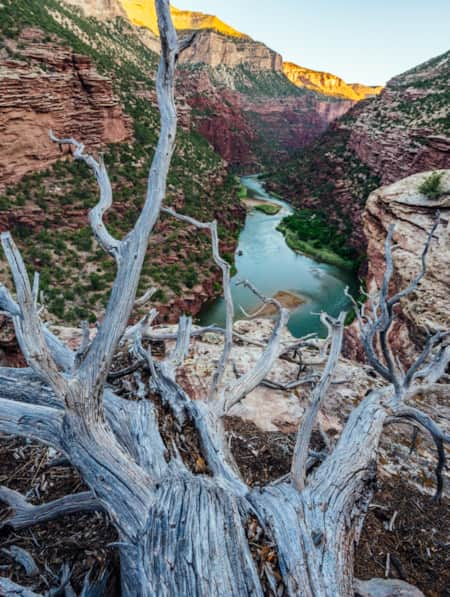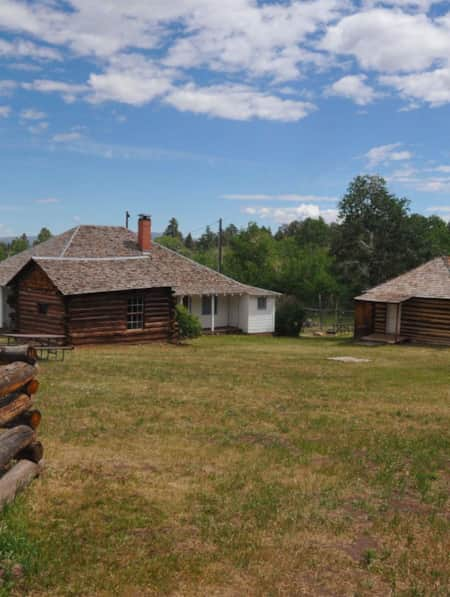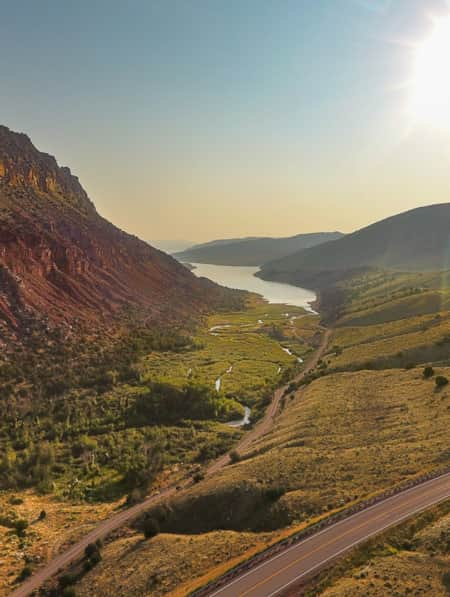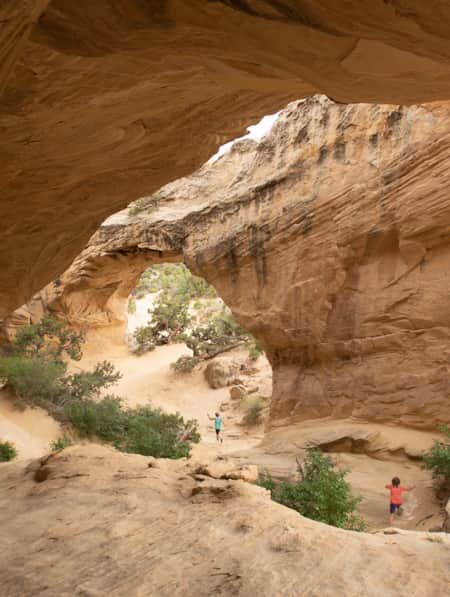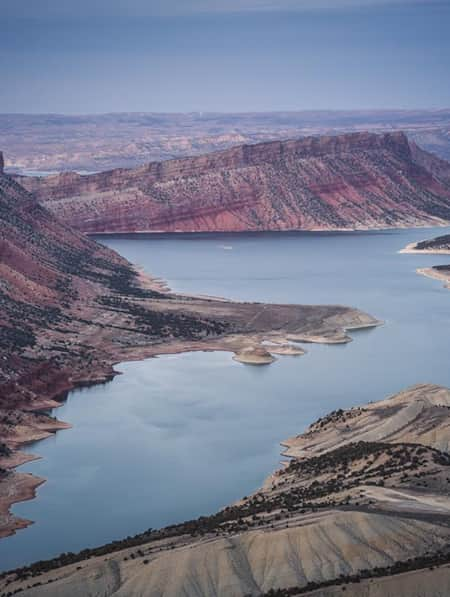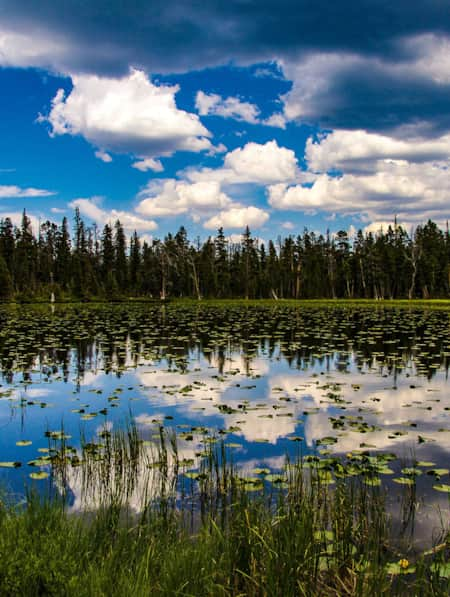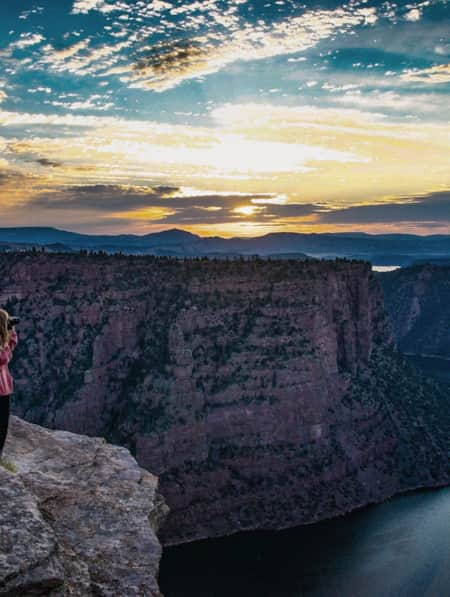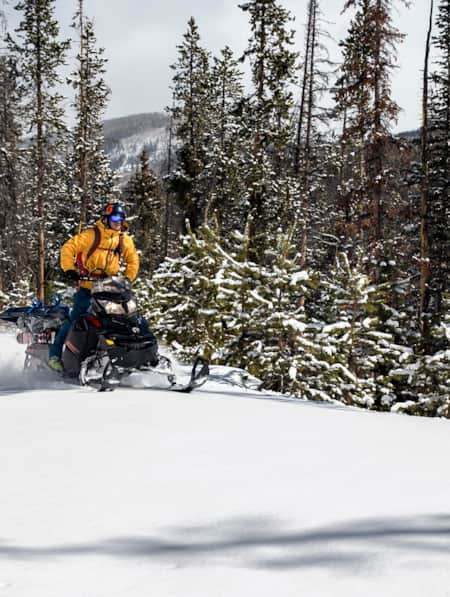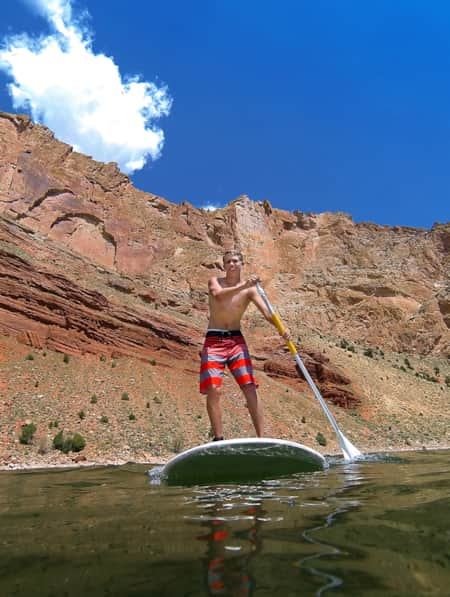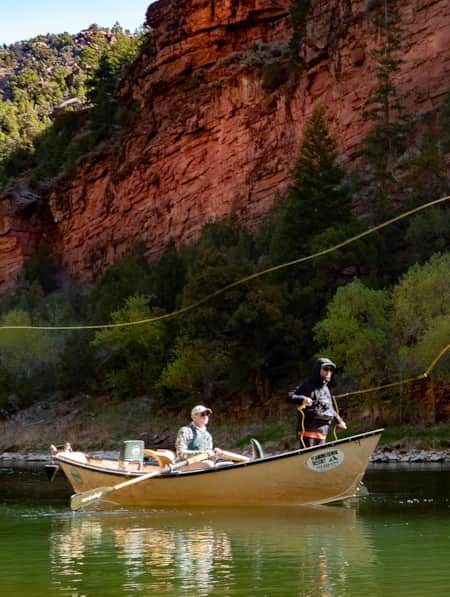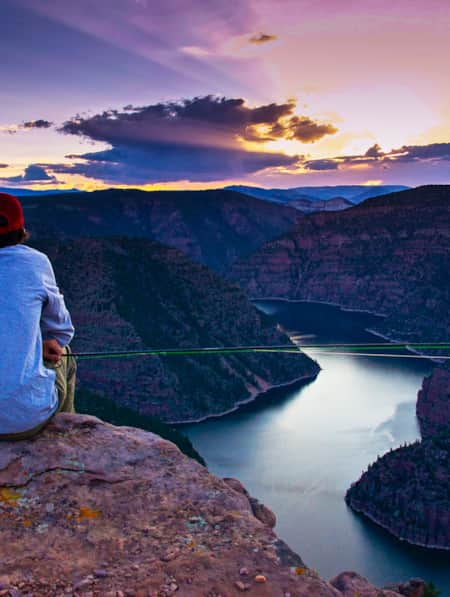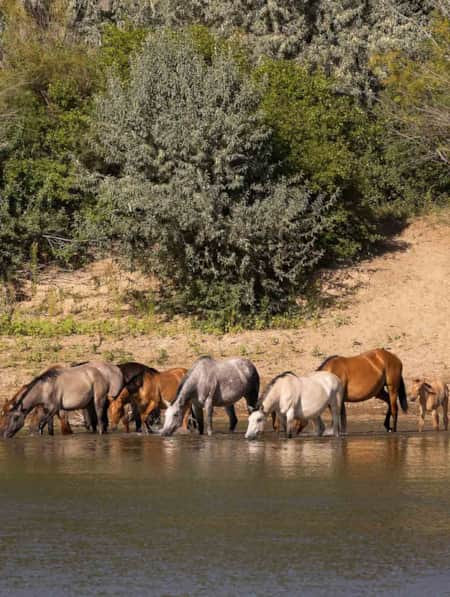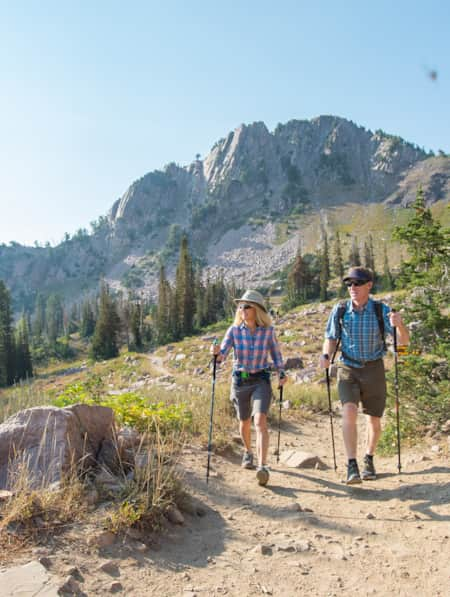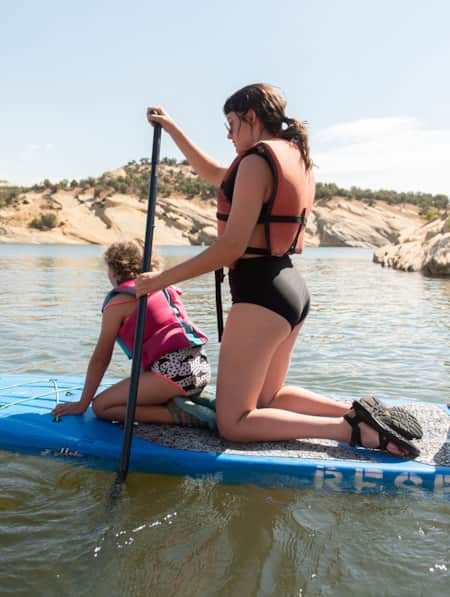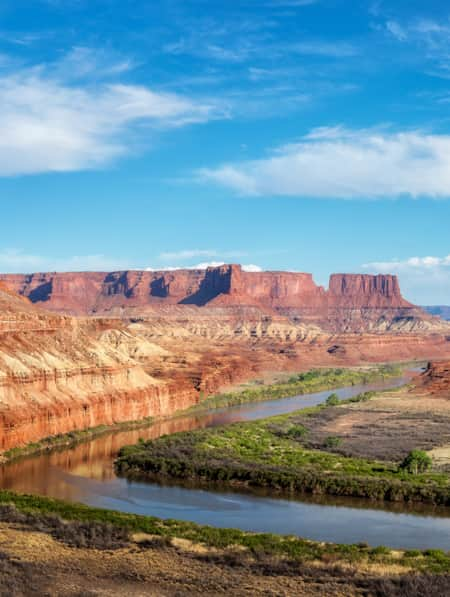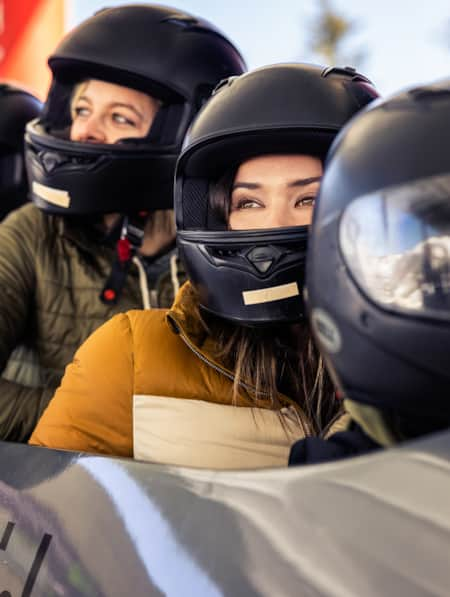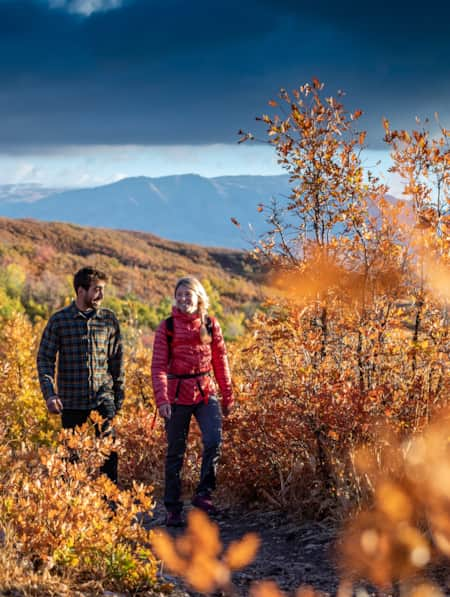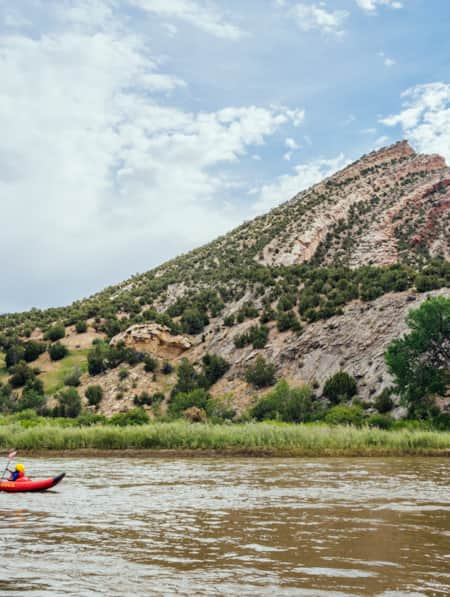Exploring Dinosaur National Monument & Flaming Gorge
Discover awe-inspiring fossils, thrilling river excursions and magnificent red-rock canyons.
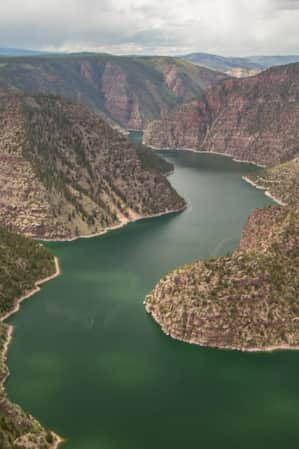
The Green River flows for 730 miles from its headwaters in Wyoming’s Wind River Mountains to the confluence with the Colorado River in Canyonlands National Park. As it winds through the canyons and desert of northeastern Utah, the river connects Dinosaur National Monument and Flaming Gorge National Recreation Area, providing visitors with an abundance of family-friendly recreational opportunities like paddling, hiking, fishing and camping.
Dinosaur National Monument
When you think of Dinosaur National Monument, the first thing that comes to mind is, well, dinosaurs. Even the monument’s annual pass punch is in the shape of a dinosaur! But despite the name, dinosaurs are just the beginning of your experience here. Western novelist Wallace Stegner once wrote of Dinosaur National Monument, “The dinosaur quarry which gave the monument its name is no more than the front yard” of the park. Stegner was right, and there’s lots to explore in Dinosaur’s back yard.
There’s no denying that dinosaurs are the reason many visitors come here; the Uinta Basin is known worldwide for its abundance of dinosaur fossils. And there’s no better place to get up close and personal with the bones and fossils of these prehistoric behemoths than at the Quarry Exhibit Hall. Start your adventure at the visitor center, where exhibits and a short film will introduce you to the monument’s geology and history. Then, head outside to the Fossil Discovery Trail, where bones and fossils are exposed in the rock just as they were originally found more than 100 years ago. The 1.2-mile hike is a great way to engage kids in paleontology and connect their natural curiosity about dinosaurs with science. (Read: The Real Story Behind the Dinosaur Quarry)
From the visitor center, a free shuttle will transport you to the Quarry Exhibit Hall, and this is where the dinosaur fun really begins. Kids and parents alike will marvel at the great wall of bones, which includes more than 1,500 fossils still embedded in an exposed layer of the Morrison Formation. These bones are the genuine skeletal remains of species from the late Jurassic Period, like Allosaurus, Stegosaurus and Diplodocus.
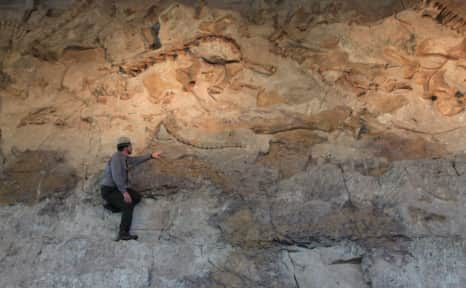
Dinosaur National Monument
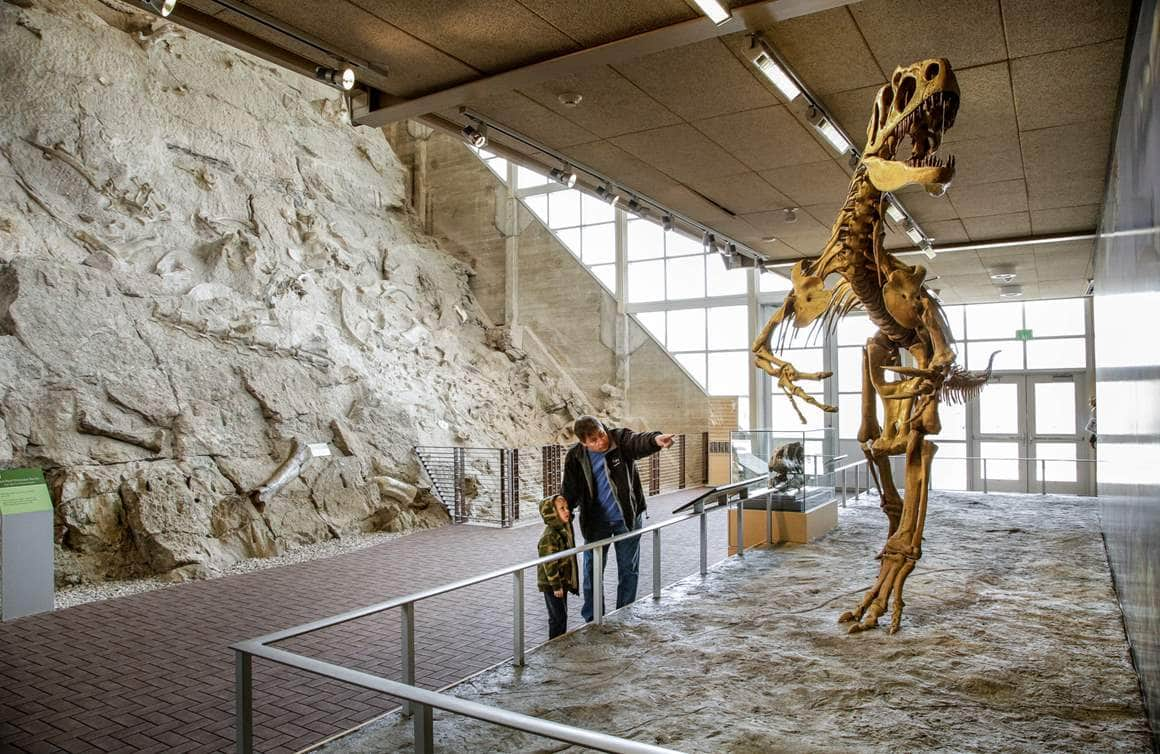
Dinosaur National Monument
The Tour of the Tilted Rocks
Beginning near the Quarry Visitor Center, this 10-mile scenic drive along Cub Creek Road provides access to hiking trails, rock art panels, historic sites and scenic views of the monument’s geology. Be sure to pick up a Cub Creek Road guidebook before you start.
At the first stop, an easy walk from the parking area leads to a small alcove believed to be one of the monument’s oldest sites of human habitation. Swelter Shelter Petroglyphs is a panel of petroglyphs (drawings etched into the rock) and pictographs (paintings on the rock) dating to the Fremont culture, which inhabited the area about 1,000 years ago. Legend has it Swelter Shelter got its name from the researchers who excavated the site, as they were working in the sweltering summer heat.
About a mile farther is the trailhead for the Sound of Silence Trail. This 3.2-mile hike gives you a close-up experience with the desert landscape and geology. You’ll wander through tilted rock layers, up slickrock and along a seasonal stream bed. Some sections of the trail are steep and rocky and require rock scrambling to continue, but you can walk as far as you like and turn around.
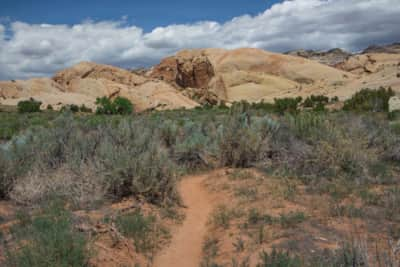
In another mile, you’ll reach the turn off to Split Mountain Campground, one of the most scenic campgrounds in Utah. Set on the banks of the Green River, the campsites sit within view of stunning red and orange tilted rock layers. Even if you’re not camping, the colorful rock formation at Split Mountain is a must-see. Here, dramatically tilted rock layers that were once level were warped upward by geologic forces millions of years ago. As the road descends a steep hill to the campground, a pullout area provides a panoramic view of the river and the rocks from a high vantage point. The boat launch at Split Mountain is the takeout point for raft trips on the Green River, including daily trips through Split Mountain Gorge and multi-day trips through Lodore Canyon.
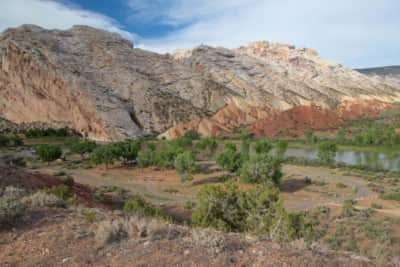
Eight miles from the visitor center, the pavement ends and Cub Creek Road continues for two miles on gravel, ending at the historic Josie Morris Cabin. Born in Arkansas in 1874, Josie’s family moved west to Utah when she was three years old. In 1913, having no money to buy property, she decided to homestead along Cub Creek. She built several cabins and raised cattle, pigs and chickens. During the Prohibition Era, she brewed apricot brandy and chokecherry wine. Josie died in 1965, having lived a self-sufficient life in the cabin for more than 50 years. Take some time to walk around the property and imagine what life would have been like for Josie, living without modern conveniences. Two short hikes here lead to Hog Canyon and Box Canyon; both trails are easy and offer shaded areas with trees.
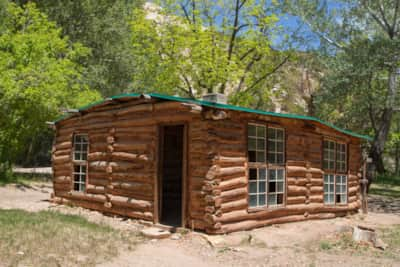
Island Park Road
Dinosaur National Monument includes miles of dirt and gravel routes that offer the opportunity to explore remote canyons and scenic overlooks. Although many of these require four-wheel-drive vehicles, Island Park Road is often suitable for cars (although some clearance is recommended). The main attraction on this route is the impressive McKee Springs Petroglyph Panel, about 22 miles from the Quarry Visitor Center and 12 miles down Island Park Road.
The petroglyph panels, accessed by a short loop trail, are known for their large human-like figures carved into the sandstone cliffs. Stop at the visitor center to inquire about directions and current conditions on Island Park Road, as the route can become impassable during wet weather and winter.
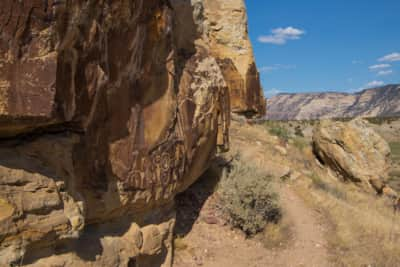
Flaming Gorge National Recreation Area
When geologist and explorer John Wesley Powell entered the Uinta Mountains on his famous 1869 expedition down the Green River, he was dazzled by the colors of the canyon (Read: Chasing John Wesley Powell: 6 Places to Explore Utah's Green and Colorado Rivers). In his journal he wrote, “The Green River enters the range by a flaring brilliant red gorge. We name it Flaming Gorge.” Despite early efforts by some to change it, Powell’s name for the area eventually became official.
Completed in 1964, Flaming Gorge Dam and Reservoir were built to provide water storage and hydroelectric power to southwestern states. With the creation of Flaming Gorge National Recreation Area in 1968 came an abundance of new recreational opportunities in a spectacular setting of red rock cliffs and expansive blue waters.
“Flaming Gorge is where adventure meets natural beauty,” says Jordynn Hewitt, tourism development assistant at Daggett County. “Its world-famous trout waters, quiet coves and sweeping canyon views allow people to connect with nature, whether they’re seeking thrills or tranquility.”
"Flaming Gorge is where adventure meets natural beauty. Its world-famous trout waters, quiet coves and sweeping canyon views allow people to connect with nature, whether they’re seeking thrills or tranquility."
– Jordynn Hewitt
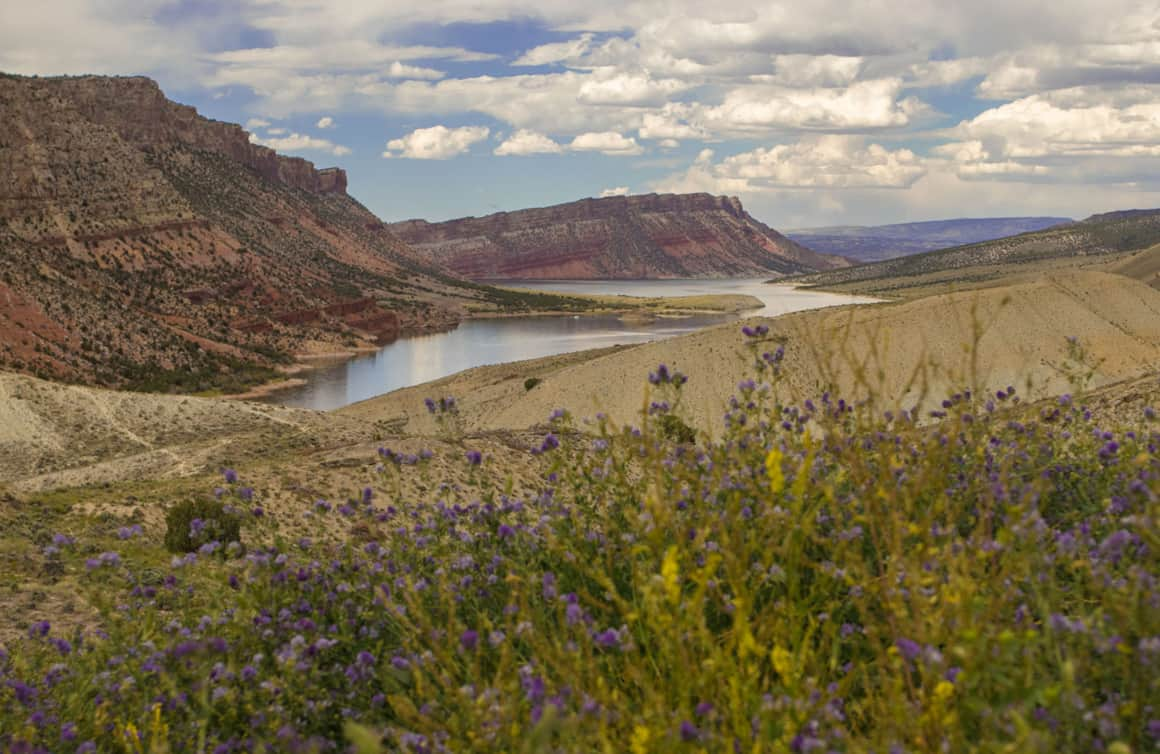
Sheep Creek Overlook

Sheep Creek Boat Launch
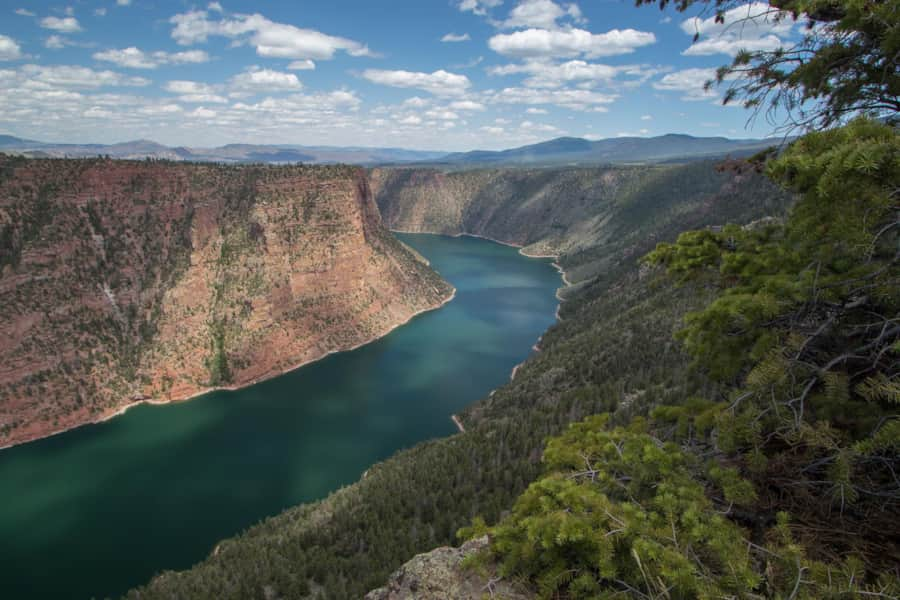
Red Canyon Overlook
Take in the Views on the Flaming Gorge-Uintas National Scenic Byway
The Flaming Gorge-Uintas National Scenic Byway traverses forested landscapes, multi-colored geologic formations and stunning views of Flaming Gorge Reservoir. The byway runs from Vernal on US 191 north to Wyoming and includes the Flaming Gorge Dam area and the town of Dutch John. The west branch of the byway follows Utah 44 to the town of Manila and leads to the Red Canyon and Sheep Creek areas. For a longer trip, you can do the entire byway as a loop, connecting via a 10-mile section of I-80 east of Green River, Wyoming.
Among all of the jaw-dropping views in Utah, the panorama at Red Canyon Overlook is a view you have to see to believe. From the Red Canyon Visitor Center, a short walk leads to observation points from a cliff that drops 1,400 feet down to the river. If heights make you skittish, you can take in the view from the large windows inside the visitor center. Photographers are drawn to Red Canyon year-round to capture iconic photos of this scene.
For an extended stay in the area, Red Canyon Lodge offers fully furnished cabins and fine dining in a forest setting next to a private lake. During summer months, the lodge has a free kid’s fishing pond, where young anglers can fish for rainbow and brook trout using a catch-and-release method.
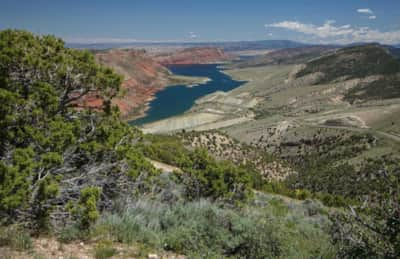
Drive the scenic 13-mile Sheep Creek Geologic Loop, which winds through rock formations and showcases the geologic history of Sheep Creek. The road follows the Uinta Fault that runs along the northern edge of the Uinta Mountains and features dramatically folded and tilted rocks. Sharp eyes may even catch a glimpse of Rocky Mountain bighorn sheep among the rock spires. Near the Geologic Loop on Utah 44, Sheep Creek Overlook offers a panoramic view of Sheep Creek Bay and the colorful sandstone cliffs from 500 feet above the reservoir.
In the fall, the kokanee salmon run at Sheep Creek is a treat for wildlife enthusiasts. A landlocked breed of sockeye salmon, kokanee live only in freshwater. Each fall, they migrate from the reservoir to streams like Sheep Creek to spawn, turning a bright red color as a result of pigments from their diet. The kokanee salmon run typically lasts only a few weeks in mid to late September; the best viewing spots are from the bridges near the beginning of the Geologic Loop.
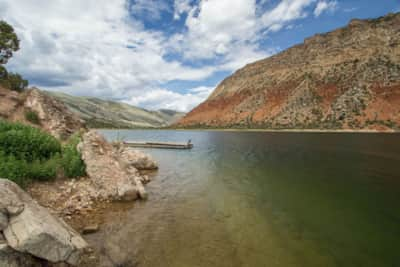
Paddle or Float the River & Reservoir
With 360 miles of shoreline, Flaming Gorge offers endless opportunities for water recreation. Take an inflatable kayak or standup paddleboard on the flatwater sections of the reservoir. If you want to add in a few splashes, kayak or raft the seven-mile section of the Green River between Flaming Gorge Dam and Little Hole Recreation Area. You’ll paddle through class II rapids with names like Diving Board and Mother-in-law and float through calmer sections that allow you to relax and enjoy the scenery. Dutch John Resort offers kayak, raft and paddleboard rentals, as well as transportation and launch services. If you prefer to go with a guide, Dinosaur River Expeditions does daily trips through this section of the Green River from late May to early September. If you want to cover more distance, Flaming Gorge Resort and Cedar Springs Marina rent motorized boats that are perfect for exploring the reservoir’s coves and bays.
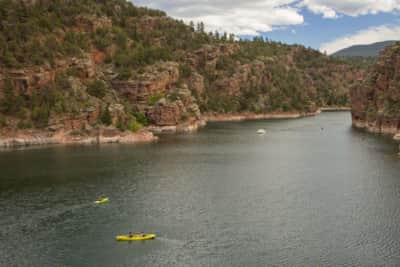
Fish in Blue Ribbon Waters
With its cool, deep waters and regulated flows, Flaming Gorge is known for producing state and world record fish, making it one of the most popular fisheries in the West (Read: Fishing Flaming Gorge). The diverse fish populations include trophy-sized lake trout, rainbow trout and kokanee salmon. The reservoir is 91 miles long and has over 360 miles of shoreline. Below Flaming Gorge Dam, which influences water flows and temperatures, the Green River is considered one of the best tailwater fisheries in the country, boasting trout populations of up to 13,000 fish per mile.
If you want to make your experience extra memorable, take a guided fishing trip with one of the local outfitters. Whether you’re interested in fly fishing or traditional angling, guides have specialized knowledge of the local waters and fish behavior and can get you to the best spots.
Things to Do
-
Fishing Flaming Gorge
People travel to Flaming Gorge National Recreation Area from around the globe to fish for record-breaking trout and kokanee salmon
-
Paddling Flaming Gorge Reservoir
Flaming Gorge Reservoir is 91 miles long and has over 360 miles of shoreline making it the perfect place to explore by paddle. Launching a canoe, kayak, or stand up paddleboard into its deep blue water can lead to an awesome experience.
-
Cycling Flaming Gorge and Beyond
A Travel Through Time: Dinosaur National Monument to Scenic Flaming Gorge
-
Flaming Gorge Camping
Numerous campgrounds are scattered throughout the Flaming Gorge National Recreation Area.

